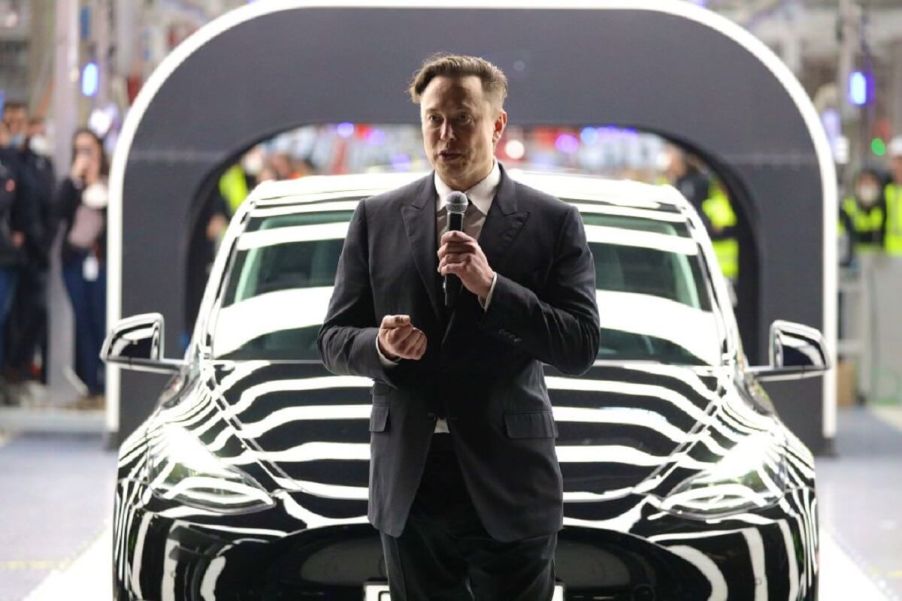
Tesla Kills 12-Volt Car Systems, Goes to 48-Volt, but Will Industry Follow?
Today during the Tesla “Investor Day,” the EV maker revealed its cars will now have 48-volt electric systems. Vehicles have used 12-volt electric systems since the 1950s. So why do cars need 48-volt systems? And will the entire auto industry follow?
Is Tesla the first to switch to 48-volt systems?

Tesla isn’t the first automaker to flip the switch to 48 volts. Numerous manufacturers incorporate 48-volt systems within their mild-hybrid systems. For mild hybrids, 48-volt systems create more power without reducing fuel economy. But production juggernauts like Tesla breaking with 12 volts for their EVs means the entire industry is on notice. So, what is it for, and why is Tesla doing it now?
The company’s switch to lithium-ion 12-volt batteries was the first move in 2021. But the energy in those batteries depletes fairly rapidly. Some of that’s due to climate and driving distance between charges. That’s because, as with a 12-volt alternator, the farther the car goes, the more the battery recharges.
Why are 48-volt electric systems better?
A 48-volt system lowers “resistive loss.” Cramming all the energy through 12-volt systems creates more resistance, so the system needs more electrical energy. Cars’ climate controls, driver-assistance systems, and infotainment features require more electricity. Because of their higher electric current, 48-volt systems lose less energy and allow electric components to respond faster.
Right now, with 70 years of 12-volt systems in vehicle production, the industry has made little movement toward 48 volts. A big automaker would need to switch before the industry followed in force. One reason for this delinquency is the components needed.
Are 48-volt components made now?

Going to 48-volt means new components operating with more voltage need development and manufacturing. Some, but not many, 24-volt system components are available for marine, small prop plane, and truck applications. And John Deere uses 48-volt systems in its row-crop planters.
In addition, going to 48 volts means wiring looms will need to change to carry higher voltage. But the wires used in a 48-volt system can be a smaller gauge, so they’re lighter weight and cheaper. That’s another advantage.
How soon will the industry follow Tesla?

Some EV makers might go with both 12-volt and 48-volt in tandem, Dalroad Components explains. The components performing better with one electric system work with that system. For the past few years, Tesla CEO Elon Musk has mentioned transitioning to 48-volt systems. But now, the company has flipped the switch.
How long this process will take and how it will manifest remain to be seen. But as the economic and marketing advantages position some EV makers as more advanced than companies that forgo 48-volt systems, the transition will speed up.



